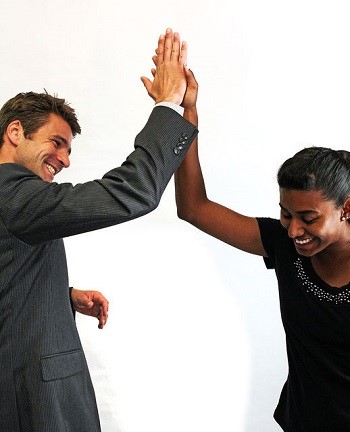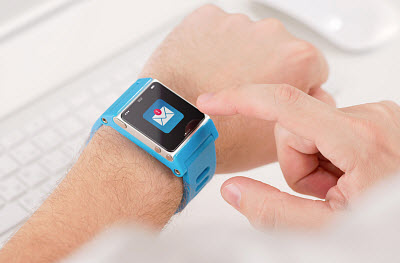The two tech giants have agreed to stop their patent battles so they can create a new smartphone generation together.
Apple Inc and Ericsson AB, the Swedish telecom firm have come to an agreement to settle over alleged patent infringements, so that they can move forward together in improving mobile technology.
This is meant to lay the foundation for the next generation of smartphones that will be considerably faster.
Ericsson is the largest manufacturer of wireless equipment in the world. By the time of the writing of this article, it had not disclosed all the terms of the agreement that was reached between itself and Apple. However, it did state that the settlement includes a type of cross-license that includes the patents owned by both Ericsson and Apple, including the LTE, UMTS and GSM standards used in mobile technology such as smartphones.
Ericsson came to a similar form of mobile technology settlement with Samsung in 2014.
 Apple, the second largest smartphone maker in the world after Samsung, holds onto a worldwide market share of 13 percent, according to data from Gartner. It will be making an opening payment to Ericsson as a part of the agreement and this amount will be followed by additional payments in the form of royalties.
Apple, the second largest smartphone maker in the world after Samsung, holds onto a worldwide market share of 13 percent, according to data from Gartner. It will be making an opening payment to Ericsson as a part of the agreement and this amount will be followed by additional payments in the form of royalties.
That said, the specifics of the financial side of the agreement were not revealed by either company. Still, this was seen as highly appealing to investors, who initially cause the price of Ericsson shares to spike by 5 percent.
The disputes in question between Ericsson and Sony were involving 41 separate patents. They were initially filed by Ericsson in February with regards to some of the mobile technology that was used in both iPads and iPhones. This occurred following Apple’s choice to decline a prior licensing agreement it had been maintaining with Ericsson, as Apple claimed that too much money was being asked for the renewal. This new agreement has set all the patent litigation aside. This type of legal battle is highly common in the mobile tech world as it is estimated that any given smartphone has around 250,000 patents.
Some predictions are starting to suggest that wearables are going to start disappearing next year.
Venture capital partner, Rick Yang, from New Enterprise Associates has released a prediction that the year ahead will be a critical one in wearable technology in which many of the devices we currently see on the market will be dying off forever.
Yang spoke specifically of the first generation devices that laid a foundation but that are rapidly being replaced.
According to the prediction from Yang, first generation wearable technology devices such as Google Glass, the Apple Watch and even the original Fitbit and Jawbone fitness trackers were vital to opening up the door to a spectrum of new and far more fashionable gadgets. He explained that “What that means is the wearable that integrates very directly into your everyday life, into your existing fashion sense to the extent that nobody knows you’re wearing a wearable.”
Yang added that the later generations of wearable technology feel more like an accessory than tech.
 He said that with the maturity of the market, luxury brands are going to start coming out with their own versions of smartwatches like the Apple Watch. This is already being seen in some important announcements of partnerships between luxury watchmakers and design houses that are working with tech giants to come out with appealing fashion accessories that have the features expected from wearables.
He said that with the maturity of the market, luxury brands are going to start coming out with their own versions of smartwatches like the Apple Watch. This is already being seen in some important announcements of partnerships between luxury watchmakers and design houses that are working with tech giants to come out with appealing fashion accessories that have the features expected from wearables.
Yang said that “At the premium end of the spectrum, it’s something like a Tag Heuer, right? It looks like a Tag, but it provides much more functionality than a Tag.” He also pointed to Athos, the startup supported by venture capital, which develops and manufactures workout clothes with embedded sensors for smart features. These smart clothes track heart and respiration rate, muscle groups and other health and performance issues.
To Yang, the most important feature of wearable technology in the future will be that it will function without feeling like a device is actually being worn. That way, a user can continue with his or her regular routines without having to think about whether or not gadgets are involved.
 Apple, the second largest smartphone maker in the world after Samsung, holds onto a worldwide market share of 13 percent, according to data from Gartner. It will be making an opening payment to Ericsson as a part of the agreement and this amount will be followed by additional payments in the form of royalties.
Apple, the second largest smartphone maker in the world after Samsung, holds onto a worldwide market share of 13 percent, according to data from Gartner. It will be making an opening payment to Ericsson as a part of the agreement and this amount will be followed by additional payments in the form of royalties.
 He said that with the maturity of the market, luxury brands are going to start coming out with their own versions of smartwatches like the
He said that with the maturity of the market, luxury brands are going to start coming out with their own versions of smartwatches like the 